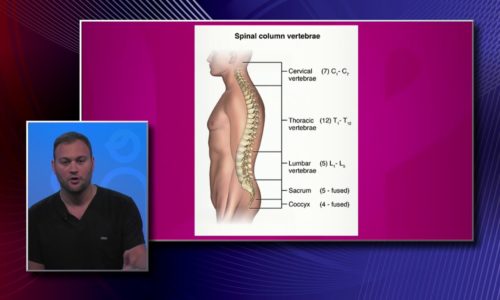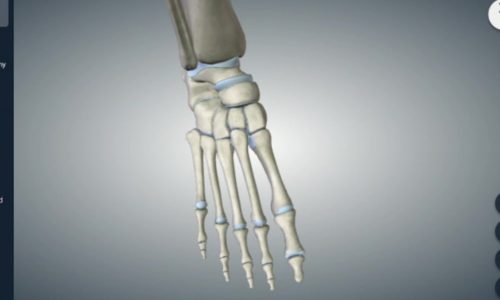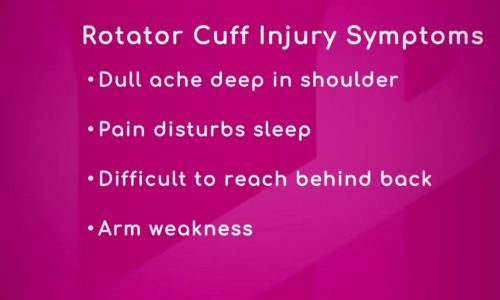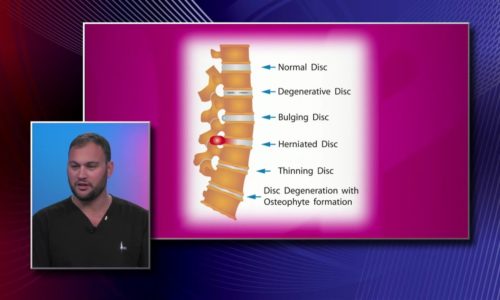Anatomy of Lumbar Stenosis |
Dr. Georgiy Brusovanik, Spine Surgeon with Baptist Health South Florida, explains cervical vertebra (neck area) can have stenosis and its results would be upper extremity symptoms, the thoracic vertebra rarely gets stenosis and when it does, the symptoms are unusual, like trouble going to the bathroom.
He also says the coccygeal vertebra is rarely affected by this condition, but the lumbar vertebra is the most common source of stenosis. He points out as the nerves are compressed, the body will try to not move and when compression becomes really severe, patients will develop back spasms.
Transcript
We have a graphic so we can show our viewers exactly what area we’re talking about so if we can use the colors to walk our viewers through this absolutely so the green area right underneath the head that’s the cervical region in the neck and you know that region also can have stenosis but the result of stenosis in the cervical region would be upper extremity symptoms mid-back which is an orange rarely has stenosis and when it does the symptoms are a bit unusual patient will have difficulty getting up from a seated position sometimes even difficulty go into the bathroom the lower region the pink that’s what we are talking about today and that’s the source of lumbar stenosis that’s most common okay so the pink region is the area of lumbar spine stenosis and blue the sacrum rarely is affected by this condition unless there are tumors or something unusual is it usual to see doctor patients that maybe have and I’m gonna use the color again for our viewers so they can follow me if we could put that graphic back up please if you don’t mind edie that pink section thank you add the pink section right there obviously that’s where the pain is occurring can it then might migrate upwards if it if it’s not you know checked or taken care of it could specifically pain would because as the nerves are compressed your body will try to do whatever it can to immobilize the painful segment and how does it do that well by making the muscles tight sometimes when the compression becomes real severe patients will develop back spasms and that’s that horrific pain where patients say that they can’t move they can’t get off the chair they can’t move in bed really something very painful no different than a calf cramp most of the time the lumbar spine stenosis is not painful when patients are sitting or laying down that condition is most troublesome when patients are trying to walk you








